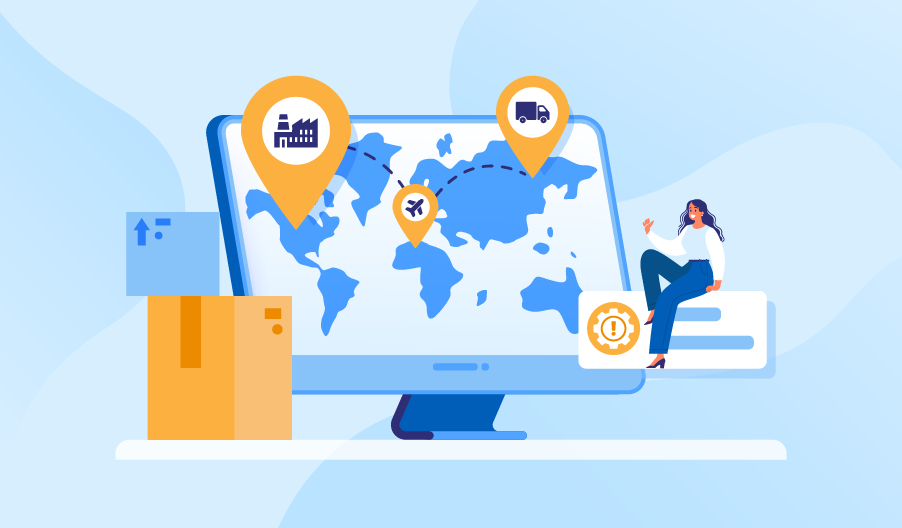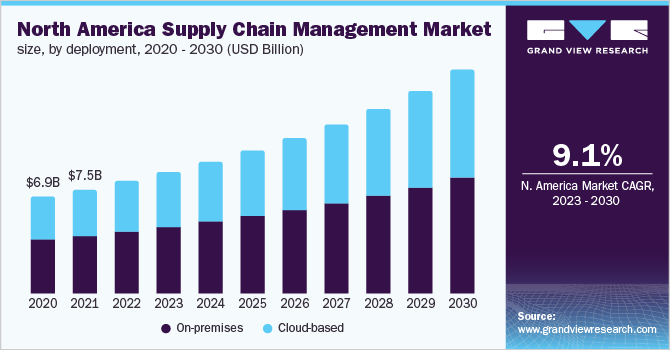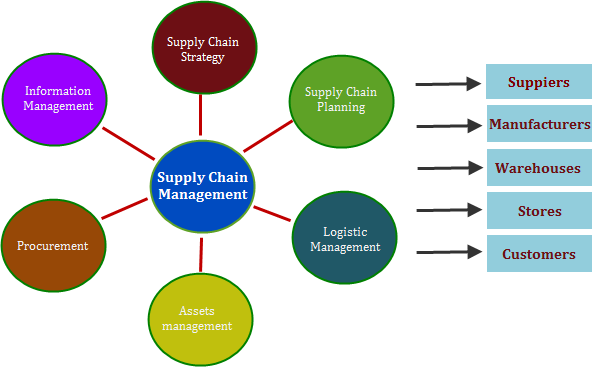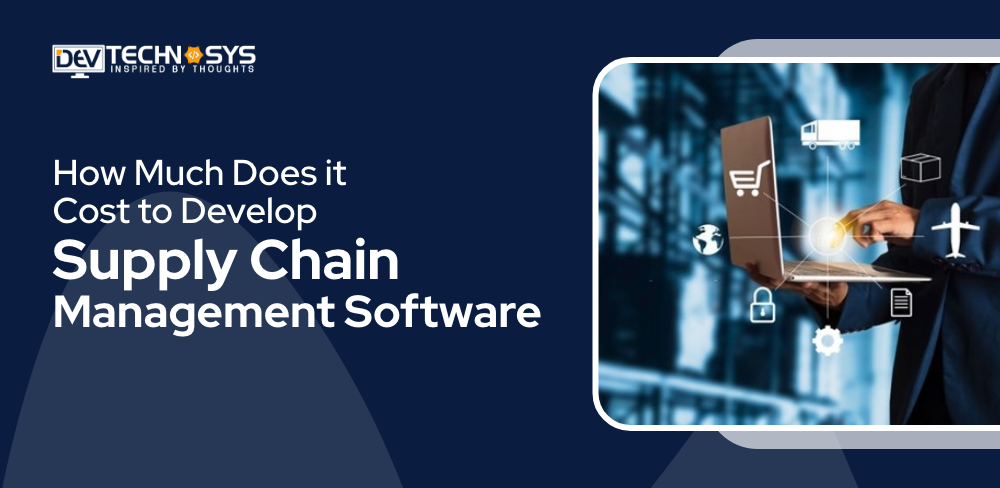The planning and oversight of the movement of products and services from suppliers to customers is the responsibility of supply chain management (SCM), a complex network in the modern global economy. In order to be competitive in this field, you must be ready to constantly keep up with the market. Thus, this blog will offer a thorough guide for the cost to develop supply chain management software and other aspects.
Software that manages supply chains is essential for companies to optimize their supply chains, reduce costs and improve customer satisfaction. Without it, companies might struggle to meet the needs of today’s marketplace and stay competitive.
This will cover the essential features and functions of SCM software. It covers everything from inventory management to logistics and transport. By utilizing automation, profitability may also be increased.
What is Supply Chain Management Software?

SCM software (supply chain management software) is a tool that helps you optimize and streamline your supply chain processes. You can plan, execute and monitor the movement of goods or services throughout your supply chain, from raw materials to the end consumer. It also lets you know how the final products will be delivered.
Software that is effective in Supply Chain Management usually includes robust features such as inventory, procurement, warehouse management, logistics and transport management, demand forecasting, supply chain analytics, reporting, and shipping management.
In order to undertake continuous planning in almost real-time, enhance demand forecasting, and prevent stockout scenarios, software solutions are needed to enhance supply chain management. So to know the cost to develop supply chain management software, you must read this comprehensive guide.
Market Stats of Supply Chain Management

- The global supply chain management market was valued in 2020 at $15.85 billion. It is projected to grow to almost $31 billion by 2026.
- With a revenue of approximately $4.4 billion, SAP Germany was the largest supplier of supply chain management software in 2020.
- The next-gen supply chain market is defined as the extensive use of digital technology by logistics companies and start-ups in order to improve the sustainability of supply chain services.
- In 2025, the market is expected to be worth more than $10.17 billion.
- The market for Supply Chain Management Software is expected to generate revenues of US$9.86 billion by 2023.
- The revenue is expected to grow at 3.40% per year (CAGR 2023-2028), resulting in a market value of US$11.65bn for 2028.
- In 2023, the average spend per employee in Supply Chain Management Software Market is expected to be US$58.52
How Does Supply Chain Management Software Work?
The supply chain management process can be described as being divided into three categories: information, product, and finance. Each business that is part of the supply chain falls under one of these categories. Let’s find out a bit more about each of these categories:
- Product flow refers to the timely creation, storage, delivery, and disposal of products throughout the supply chain. Quality assurance is also an important part of product flow.
- Information flow includes sending and receiving purchase orders and sales orders as well as updating delivery statuses. This workflow is vital because it is the basis of all other workflows.
- Finance flows deal with inventory management, payments, billing, credit terms, as well as other financial workflows.
Benefits of Implementing a Supply Chain Management Software Solution
Now that you know how SCM software works, let’s see the benefits of implementing this SCM software solution.

1. Efficiency Increases
Supply chain management software was created primarily to increase business productivity. SCM software may incorporate robots and automate procedures to help you make choices more quickly.
2. Lower costs and a longer asset life span
Preventive equipment maintenance can be reduced by using real-time trend analysis. Continuous cost savings can be achieved by automatically identifying discrepancies between actual and planned costs and providing data on why and how to optimize them.
3. Scalability
Cloud-enabled SCM software can be scaled infinitely, so your business will change, grow, and become more complex. The software you rely on will be able to adapt to meet these changes and continue performing without compromise.
4. Return on Investment (ROI)
Automated vendor performance, lead times, and quality tracking enable smarter, cost-effective buying decisions. It is clear that supply chain management software has a significant ROI. This software can help you save money and increase revenue.
5. Increased Customer Satisfaction
You can reduce delivery times, customer costs and overall efficiency throughout the supply chain. This will result in customer satisfaction that is higher. Implementing a supply chain management solution can have many benefits that will make a difference in your business.
The CRM software development can help businesses manage customer relationships more effectively, which in turn can improve supply chain efficiency.
You can gain a competitive edge in your industry by increasing efficiency, decreasing costs, and improving customer service. SCM software is scalable, meaning it can be adapted to changing business needs. So when you develop SCM software, you should first know its cost to develop supply chain management software.
The ROI can also be substantial, making it worthwhile. SCM software has the potential to be a potent tool for any business that wants to expand and flourish. It can automate processes and generate cost savings.
Adoption Models of Supply Chain Management Software
When using supply chain management software, there are various things we must perform. Here are some business models you might need to discuss when developing supply chain management software. A good web app development team will understand your business concept and then begin product development.
1. SaaS (Software-as-a-service)
Software as a service (SaaS) suggests that you have chosen cloud-based supply chain management software solutions that are hosted by your desired service provider organization. With a secure internet connection, the software can be accessed via the web browser.
You will need to pay a monthly fee to your service provider. This fee is based on the storage space and functionality you require. The SaaS software development provider will also be responsible for software updates and maintenance to keep the system bug-free.
2. Custom Development
You have chosen custom development to get a completely customized software program that will be kept on your company’s servers. Your software might be created in accordance with your demands by a professional software development business.
You don’t need to pay a monthly fee because all money is paid at purchase. This model is particularly beneficial for companies with confidential data. Hosting the software on your server reduces the chance of your company losing important data to competitors.
These are the models our experts generally work on. The custom software development team is capable of creating any other model that you require. So when you hire a development team, you must ask them about the cost to develop supply chain management software.
Essential Features of Supply Chain Management Software
Features are the most crucial thing for any development project. It affects the overall cost to develop supply chain management software. Want to know what features are? Following are the features that you must integrate in your software that are approved by a CMS software development company.

1. Purchase Management
This helps to manage the entire purchasing process for inventory. Additionally, it enables automatic execution and cooperation, which lowers costs and increases profitability.
2. Distribution Planning
This helps to ensure that goods are delivered at the right time and is balanced in distribution. It increases inventory and reduces costs.
3. Material Management
This improves overall material management by allowing faster goods movement and optimizing every step.
4. Inventory Management
Warehouse managers can track and manage inventory to achieve better demand forecasting, asset tracking, and re-ordering results.
5. Warehouse Management
Different transport channels are used to improve the movement and storage of goods.
6. Sending and Receiving
This is an excellent way to manage the delivery of goods through synchronizing various transport channels.
7. Return Management
This feature enables considerably better examination and processing of money, leading to systematic returns.
8. Supplier Relation Management
This helps to improve the management’s ability to interact with suppliers. With a better strategy, it makes it easier for the company to achieve its goals.
9. Forecasting
This allows the manager to plan production cycles with greater anticipation by analyzing future demands.
10. Third-party integrations
This allows for the integration of third-party services, which is often necessary to improve managerial operations.
11. Asset Tracking
This helps to identify serial numbers and barcodes so that assets can be quickly recognized. This is useful for warehouse management.
12. Management and Fleet Tracking
This feature allows you to track the movement of your fleet very efficiently. It will also help in tracking supplies at each stage.
13. Demand Management
This improves the chances of managing the demand and balancing the supply at each step. It is also useful in planning production without any difficulties.
14. Credit & Price Control
This feature can control price fluctuations by taking various steps.
15. Invoicing and Sales Order
This feature makes delivery more efficient by ensuring flawless invoicing.
16. Inbuilt Chatting System
This allows everyone on board to remain in close contact with one another, saving a tonne of time during real-time operations.
17. Sales Tax Management
It is important to manage taxes. This feature allows you to keep track of the different products and locations.
18. Fund Flow Management
This allows you to compare different balances with records, and draw the exact figures that will tell you how much money you’ll need.
19. Assigning User Rolls
This helps to maintain the data’s visibility and makes it more useful. It makes data more relevant.
20. Analytics & Reports
It generates total inventory reports by taking order history and transaction reports into account. These reports can improve productivity and efficiency in the overall operation.
SCM Used in Different Industries
Supply Chain Management (SCM)software is used by many industries to increase efficiency, decrease costs, and improve visibility and control over the supply chain. These are just a few industries that use SCM software.
1. Retail
SCM software is used by retailers to track inventory, optimize logistics, and track products. This software allows retailers to reduce time and cost to develop supply chain management software associated with order fulfillment and inventory management. Moreover, with the help of retail app development, retailers can enhance their customer experience, increase sales, and improve overall business operations.
2. Manufacturing
SCM software is used by manufacturers to plan production, manage raw material inventories, and optimize manufacturing processes. This software automates production processes and helps manufacturers increase operational efficiency.
By leveraging the expertise of a manufacturing software development company, and knowing the cost to develop supply chain management software, manufacturers can access customized SCM software solutions that meet their specific business needs and drive success in their operations.
3. Healthcare
SCM software is used by healthcare providers to track orders, manage inventory, and ensure prompt delivery to their facilities. This software allows healthcare providers to improve patient care by making sure that the equipment and supplies they need are available.
With the help of a healthcare app development company, healthcare providers can streamline their supply chain management processes, reduce costs, and improve patient care.
4. Food and Beverages
SCM software is essential for food and beverage companies to manage their supply chains effectively. It plays a crucial role in the production planning, inventory management, and logistics of the industry.
These companies leverage SCM software to streamline their operations and provide customers with fast and efficient delivery services. With the help of this software, a food delivery company can optimize their production, reduce waste, and maintain product quality, thus improving its overall business performance.
5. Automotive
SCM software is used by automotive companies to manage their supply chains, including procurement, production planning, and inventory management.
However, automotive software development services can leverage their expertise to build custom SCM software solutions tailored to the unique needs of automotive companies. Such software solutions can help companies know the cost to develop supply chain management software and help improve their production processes, reduce costs, and increase the overall quality of their products.
6. Logistics
SCM software is used by logistics companies to manage their supply chains, which includes transportation management, warehouse management and inventory management.
With the use of logistic management software, businesses may streamline their processes, cut expenses, boost customer happiness, and boost profitability. SCM software can be beneficial to any industry involved in supply chain management or logistics.
Tips to follow for SCM Software Development
Without more information on custom development, it is impossible to make the final selection of the supply chain software you need. Let’s look at some key aspects of supply chain software development.
The ultimate goal is to create a supply chain management software from scratch and know about its cost to develop supply chain management software. Enterprises have the unique opportunity to provide multi-functional software that meets their business requirements.
Here are steps to help you succeed with custom supply chain software design. Prior to starting the modern software development process, you must complete these necessary procedures.
1. Establish Clear Goals and Identify your Needs
For overall project success, the first steps are crucial. An enterprise must conduct the most thorough requirement analysis. Comprehensive insights are key to faster software implementations and the implementation of changes.
It also includes both technical and business requirements, with short-term as well as long-term goals. This document will provide a guideline for future development.
2. Forge a Cross-Functional Team
Throughout the development process, the role of the team is very important. Supply chain software development involves complex projects that require high-level expertise.
This involves specialists from different fields performing multiple tasks over a long period of time. You must also check whether they will be able to use software development methodologies for your software development project.
There are many options for hiring the team. These include full-time engagements, dedicated teams, and freelancers. The team composition is the same. A typical SCM software development team includes BA, system architects and project managers. Designers, developers, QA specialists, and others are also included.
3. Define the Technology Stack
Businesses have so many options thanks to technology advancements. By choosing the appropriate tech stack, the team must maximize technology. It is crucial to be extremely detailed when talking about the creation of custom supply chain software.
Good market practices combined with clearly defined project requirements is the best way to make a decision. It is necessary to adopt the most recent development methods because of the complexity of supply chain solutions. These steps will ultimately increase the cost to develop supply chain management software according to the tech stack you choose.
Cloud-based solutions, for example, offer high scalability and accessibility as well as enhanced security and performance. Following are a few of the most often used technologies in supply chain software development.
- Web technologies
- Mobile technologies
- Cloud-based services
- Big Data
- EDI
- Internet of Things
- Artificial intelligence
4. Execute your Plan
The team can then move forward with implementation by preparing a detailed plan. Due to project complexity, the development timeline can last several months. It is important to concentrate on the steps.
Software development is a complex process that requires a variety of proven methods and techniques. It is designed to maximize efficiency at each stage of development, reduce risks and achieve the desired results. Software development methods can be classified into two groups based on the classification.
Predictive models (Waterfall and V-shaped), Iterative, Scrum, and Spiral) are focused on a predefined scope. Agile models, such as Scrum, Lean and Kanban, are more flexible and can be modified on the fly.
Although SDLC models can be varied, the main goal of all stages of development is to effectively complete them all: requirements analysis, design, development testing, deployment and maintenance.
SCM Software Development Costs

The level of functionality included in a supply chain software will impact the cost to develop supply chain management software. A complete ERP solution is recommended for large enterprises with multiple departments. A fully-functional software solution will cost more. The final cost of custom software development is also affected by the following factors:
- Number of users
- Hourly software development costs
- Infrastructure
- Support and maintenance on an ongoing basis
SCM software development is very affordable and can be easily developed by the user in a matter of minutes. SCM software development costs will be between $15000 and $40000. However, to know the exact cost to develop supply chain management software, you can employ a firm if you’re seeking an automated solution for your organization’s operations.
Conclusion
No matter what industry, companies need efficient solutions that streamline their business processes and operate across the supply chain. The software development company can improve productivity and control of the supply chain by adopting supply chain management software. They have the unique opportunity to combine all components into one system.
It is important to define your needs precisely in order to choose the best solution. If you are careful about your business needs, both ready-to-use or custom supply chain software solutions can be a valuable tool to improve efficiency. Now that you know the cost to develop supply chain management software, you should now implement your ideas into reality by hiring a reputable software development company.
Frequently Asked Questions
What does SCM mean in terms of modernity? What features should the up to date system have?
- Resilience
- Flexibility
- Lean manufacturing
- Management of demand
- Trust and traceability
How much time does it take to Build Supply Chain Management Software?
There are many variables that affect the timeframe for SCM software. There are many variables that can affect the timeframe for SCM software development, including complexity and functionalities as well as the number of developers involved. The basic software will take approximately 3-5 months, while the more complex software with advanced functionality will take around 5-7 months.
How do you Approach Supply chain software development?
If the company is involved in custom software development, they must implement the solution from scratch. This means they are responsible for all stages of development: requirements analysis, system design and development, testing, deployment and maintenance. Planning is key to transforming business requirements into practical solutions.
What benefits do enterprises gain with supply chain management software?
It is an efficient tool that may be used to handle a variety of supply chain operations. These are the benefits that enterprises can reap from this solution:
- Enhanced connectivity
- Visibility from end-to-end
- Data-driven decisions
- Flexibility for business
- Security
- Cost-saving
- Improved customer experiences

































